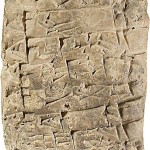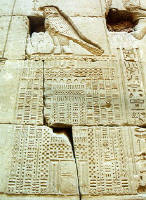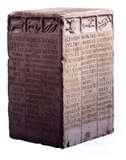Of Calendars and Kings
No two ancient kingdoms used the same method of keeping track of time. Some used a Solar calendar, some used a Lunar Calendar, and some used a Stellar or Sidereal Calendar [stars]. Gen 1:14 says, And God said,”Let there be lights in the firmament of the heavens to separate the day from the night;and let them be for signs and for seasons and for days and years.” This must mean that all three are to be used.
FYI: A Solar Calendar is 365.25 days long.
A Sidereal Calendar is 360 day long.
A Lunar Calendar is 354 days long.
In any given kingdom, the calendar used was dictated by who was in charge and what things were important. Most calendars started in the spring, but not all. In order to perpetuate the myth that the king was a god, great pains would be taken to know when a certain star or constellation might ascend or decline. This would then dictate when a coronation would take place or what date one would use for the birthday or wedding of a god-king or other leaders. One could become rich if one were able to ascertain this kind of information for the king or leader.
It was not until Pope Gregory XIII, in 1582, that a reliable method of time keeping was devised for the solar calendar. Roman Catholic countries adopted the Gregorian calendar immediately by order of the Pope. Protestant countries, being naturally suspicious of the Pope, did not readily accept the calendar but did slowly follow suit over the next two hundred years or so, Greece held out till 1923. The protestant nation understood the Pope was the anti-christ fulfilling prophecy by changing times [Dan 7:25], but begrudgingly realized that it was more accurate than the pagan Julian calendar they were using. This is why people like George Washington and Beethoven will have two birthdays listed; they were born in the year their country changed over to the Gregorian calendar.
Fortunately, throughout time, God has provided men with the ability to solve these difficult problems and they have been successful in matching up all the different calendars coming up with accurate dates in antiquity. These dates were compiled by the great chronologist of history; Sir Isaac Newton, Clinton, Laplace, James Bowman Lindsay, Wiseler, Benson, Brown, Mann, Ideler, Biachini, Sanclemeti, etc. Since the purpose of Biblical Prophecy is to foretell history, the interpretation and fulfillment must fit within the boundaries of generally recognized historical chronologies.
FYI: During the mid 1700″s a Swiss astronomer and chronologist, M. Jean Philippe Loys de Cheseaux (published 1754), while attempting to fix the date of Christ’s crucifixion discovered four soli-lunar epacts (reconciliation of solar and lunar calendars) previously unknown to astronomers. These were discovered by examining the 1260 day/yr, 1290 day/yr, 1335 day/yr, and the 2300 day/yr prophecies in the book of Daniel and using recently invented telescopes and accurate timepieces. M. de Cheseaux found a near perfect method of harmonizing the lunar, solar, and sidereal calendars that reconciles them to one another. He determined that every 1260 years the sun and moon align within 5 minutes, allowing the calendars to reconcile. Needless, to say, M. de Cheseaux’s work points to the obvious, that our Creator is the perfect and complete historian and that the stars do give signs. The 30 days and additional 45 days of Daniel Chapter 12 are required to harmonize the calendars. [See Also: Soli-Lunar Cycles]
The only real problem with the Gregorian Calendar is that it totally goofed up the first century. There is only one year one, because it has no “0” 1BC and 1AD are the same year. This “1” was supposed to date the birth of Messiah however there are some missing years, because Herod died in 4BC (the guy who sought to kill Messiah when He was less than two years old). This why all days in the first centuries AD or BC have a “c” or “ca” after them. This means circa, and the date is not accurate because it cannot be. Those who are working with historical events are forced to push the error either before the year one or after the year 100 to get an accurate time line. This is why Messiah’s death is 29AD or 32AD or 33AD. It is all in where the writer chooses to take the errors into account.



